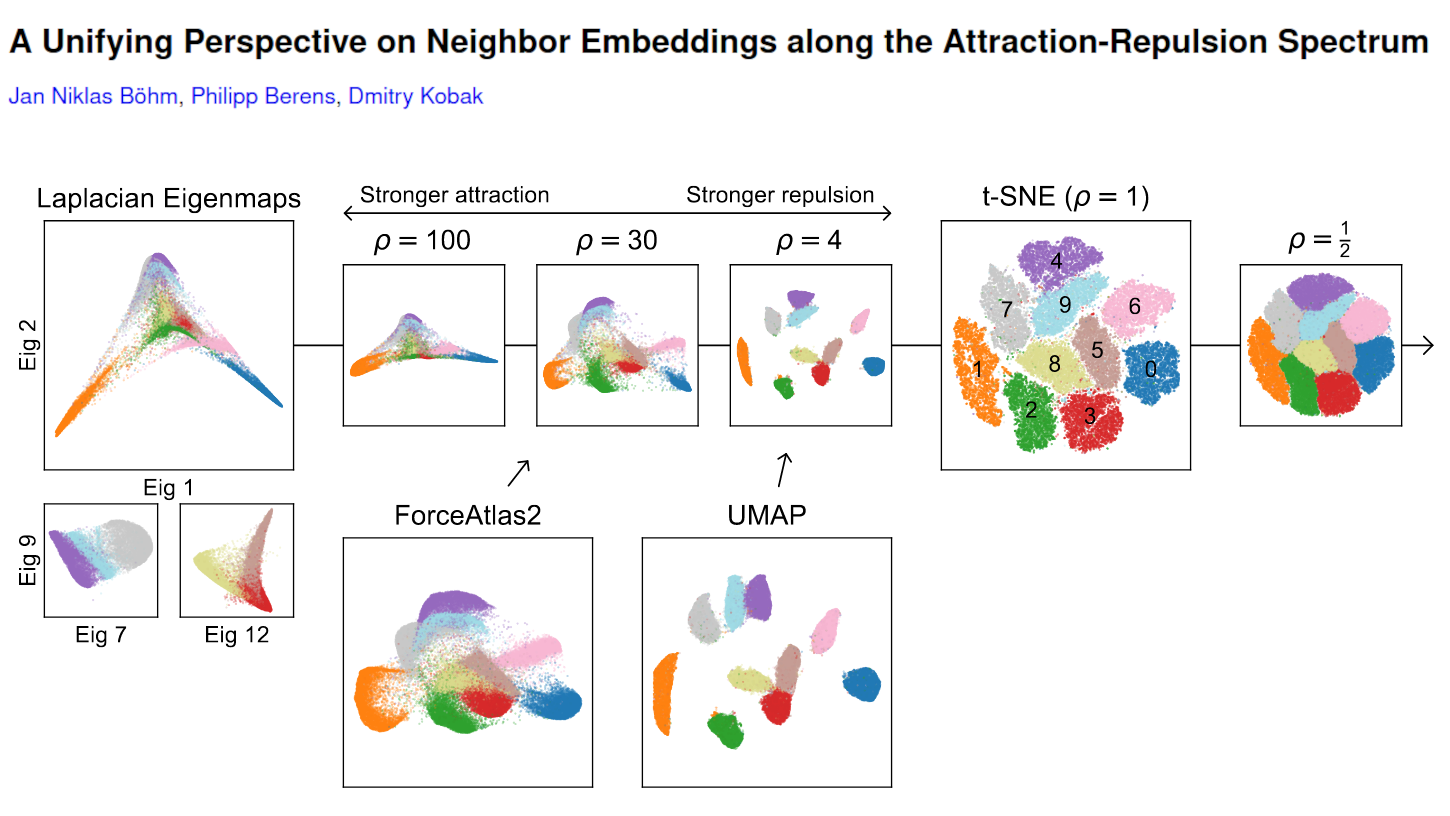Venue: arXiv
Year: 2020
Paper: https://arxiv.org/abs/2007.08902
Abstract
Neighbor embeddings are a family of methods for visualizing complex high-dimensional datasets using kNN graphs. To find the low-dimensional embedding, these algorithms combine an attractive force between neighboring pairs of points with a repulsive force between all points. One of the most popular examples of such algorithms is t-SNE. Here we show that changing the balance between the attractive and the repulsive forces in t-SNE yields a spectrum of embeddings, which is characterized by a simple trade-off: stronger attraction can better represent continuous manifold structures, while stronger repulsion can better represent discrete cluster structures. We show that UMAP embeddings correspond to t-SNE with increased attraction; this happens because the negative sampling optimisation strategy employed by UMAP strongly lowers the effective repulsion. Likewise, ForceAtlas2, commonly used for visualizing developmental single-cell transcriptomic data, yields embeddings corresponding to t-SNE with the attraction increased even more. At the extreme of this spectrum lies Laplacian Eigenmaps, corresponding to zero repulsion. Our results demonstrate that many prominent neighbor embedding algorithms can be placed onto this attraction-repulsion spectrum, and highlight the inherent trade-offs between them.
Additional information
Twitter thread: https://twitter.com/hippopedoid/status/1285154214147235840

